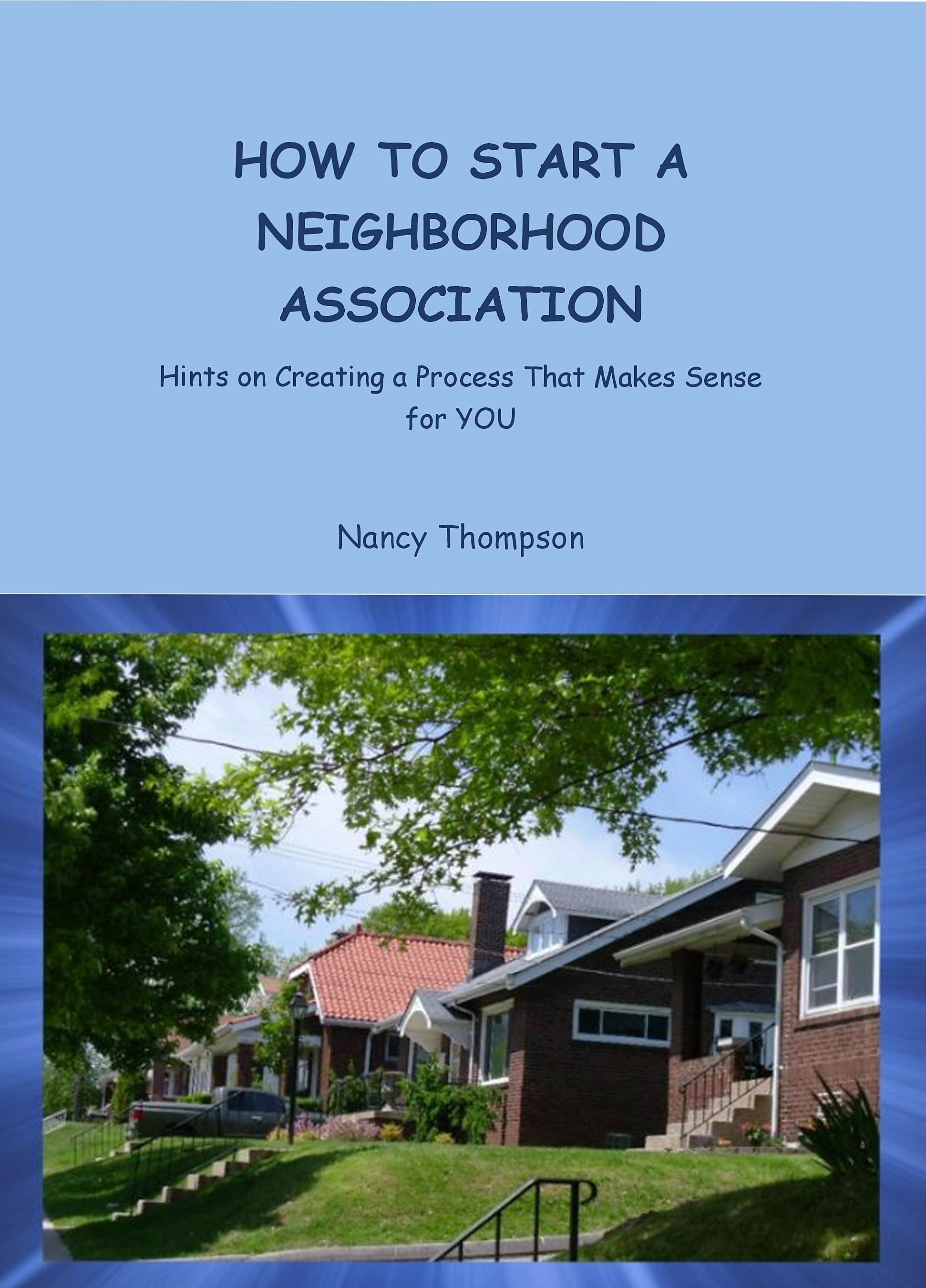Neighborhood Associations Must Choose Projects Carefully

Last Reviewed: April 3, 2024
Once neighborhood associations have created a basic organization, or often even before that, conversations tend to revolve around a specific project or long-term initiative that participants believe is needed. My experience as a planner has been that many times members are reluctant to choose one activity over another, preferring not to irritate anyone by selecting something other than their first choice.
But for most neighborhood associations, choosing a few priorities over other topics of interest is essential.
Leaders and members do not have infinite time and energy for working on
neighborhood initiatives, and many ideas will require at least some money and
the cooperation of governments or resident businesses.
Even if talent, time, and money are no problem, it can be advantageous to limit the number of different activities. Too many choices may leave new members befuddled about how they plug in, and make it progressively more difficult to orient members about the substance of the organization.
In short, you need a balance of excitement and manageability. Excitement demands that you choose enough
activities to make your program seem robust, while manageability requires some limits on how many neighborhood projects you undertake.
Why a Sharply Focused Program for
Neighborhood Associations Is Important
We think it is quite important to limit the number of initiatives, but how severely you restrict your primary activities is based on several factors.
1. Organizations with more active members, more donors, a well-defined committee structure, and a longer history can afford to choose more projects than a new organization in a neighborhood where many people are struggling financially or many families are overextended already.
2. Neighborhood associations where most active members have high education levels and are professionals may safely choose more complex projects, but not necessarily more projects. Often people with demanding day jobs are overly ambitious in estimating how much time people can really afford to volunteer. And my experience is that they tend to underestimate how difficult it can be to complete a project if there is no full-time professional help, which is usually the case for neighborhood associations.
3. If the organization is new, and not everyone has embraced the notion of an association, it is particularly important to keep your activities and projects sharply focused and easily winnable. "Winnable" in this context means that you can achieve a noticeable improvement quickly, and that your achievement is not dependent on a multitude of other actors doing something they have not yet promised to do.
Count major social activities and festivals as
activities. For instance, if your board
gets together and decides they can handle three major activities per year, don't
decide to add a complex Maple Park Days festival as a fourth project, thinking it
somehow doesn’t count because it's for fun.
Simple social activities, however, need not be factored in. We're thinking of a potluck, informal coffee
at a coffee shop, barbecue in the alley, and such. Consider the amount of volunteer effort that
will be required to pull off your social event.
Rationale for an Expansive Set of Projects for Your Community Organization
On the other hand, expand to more than one activity at a time in these circumstances:
- Members have become bored with your one activity.
- Your single activity has become controversial.
- Your organization’s membership is not growing, and some prospective members indicate they are not interested in your particular project.
- The single focus or current focal pieces of the program are not interesting to some individuals and groups within the community. Remember that young people, newcomers, immigrants, or minorities you would like to attract can be considered a group in this context.
- You have more willing volunteers than can be useful on your single or limited number of projects. Don't deceive yourselves into thinking that just because you have fewer than a dozen volunteers turning out for your Saturday morning litter patrol, that you only have five or ten people willing to work. Many times people are not volunteering because the particular opportunities you offer are not appealing to them, the time does not fit their schedule, or they feel they have no skills to contribute. Sometimes our ego as leaders prevents us from seeing this, but really check into what people outside your orbit are thinking.
- Your neighborhood has one or many long-term issues that are severe. Try to reserve some energy and volunteer enthusiasm for addressing the big picture, especially if you are in a really challenged environment. You may find that a very rough 80-20 rule will work for you. Ask your membership if the 80 percent of effort should be focused on short-term gains or long-term issues, and let the results of that discussion be your guide. It's an easy way for people to dialogue with one another about the intensity of effort that is devoted to recurring projects such as clean-ups, versus longer-term and more complex projects such as reducing the number of vacant lots, deserted alleys, abandoned buildings, and forlorn streams that you have in your neighborhood.
For long-term issues, choose one particular aspect of the larger and more stubborn problem that you would like to address. For example, if crime or the perception thereof is a big problem for your neighborhood, you might want to lobby your police department to adopt a community policing model for your particular area.
Sometimes you also may want to try to collect and publicize data when people voice a persistent feeling that something is wrong, but others doubt whether those fears are valid. For instance, you might want to do your own housing condition survey in an older neighborhood where many homes seem to look like they are in need of serious maintenance. Or if neighbors are griping about the loss of young people to other neighborhoods or cities, you might empower yourselves by looking into your own neighborhood demographics, which is now quite easy for amateurs to undertake.
Finally, you may want to review one of the previous two parts of this article (button links below), or you may want to check out one of the other pages relevant to many neighborhood organizations (photo links below the buttons). Also check out pages on this site that are relevant to your particular issues.
For further reading, please go to our Sitemap page and look for the link to a list of our neighborhoods topics in the yellow box a few paragraphs down. (There is an additional link for topics particular to distressed neighborhoods.) Or follow the links below to get you started.
Join USEFUL COMMUNITY PLUS, which provides you monthly with short features or tips about timely topics for neighborhoods, towns and cities, community organizations, rural environments, and our international friends. Unsubscribe any time. Give it a try.




